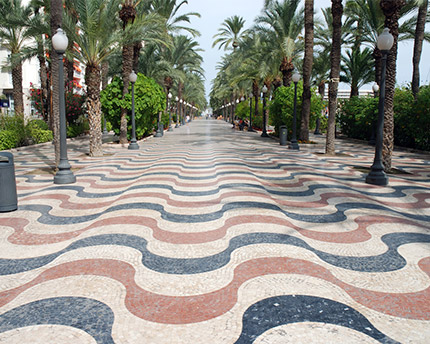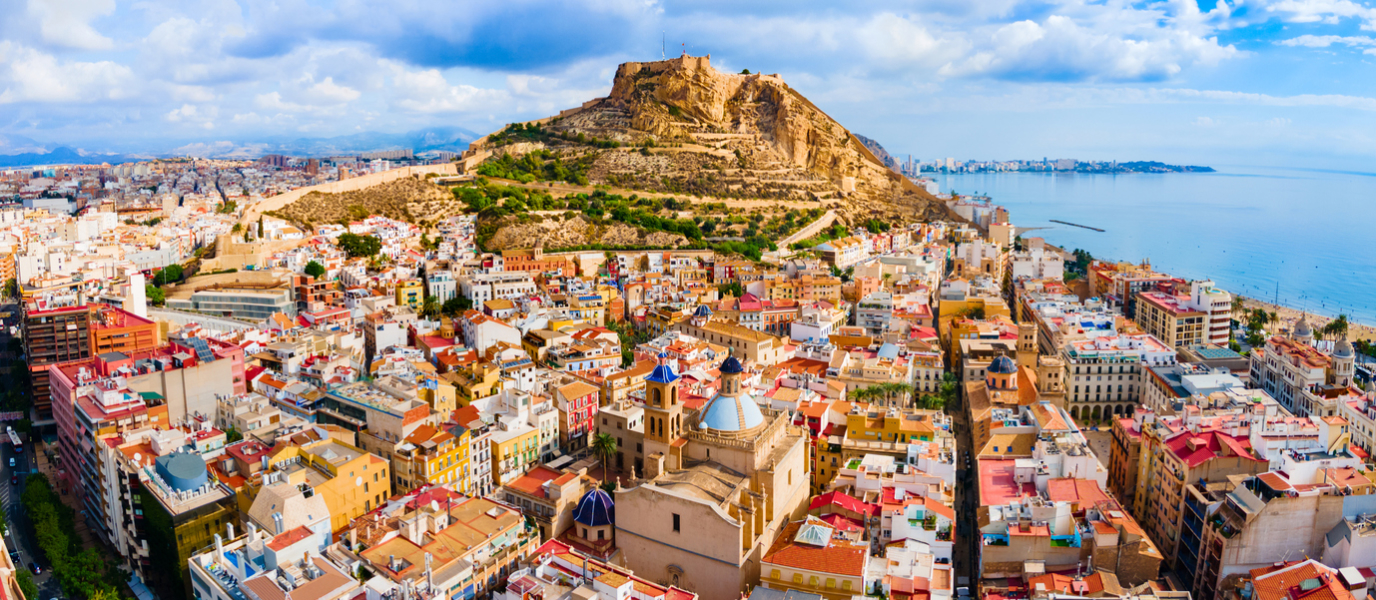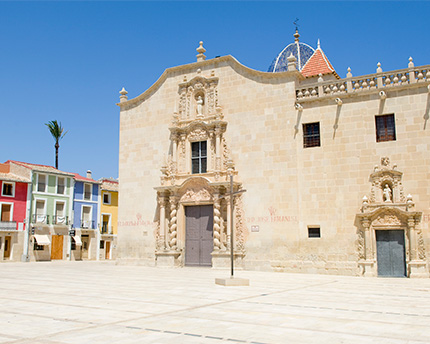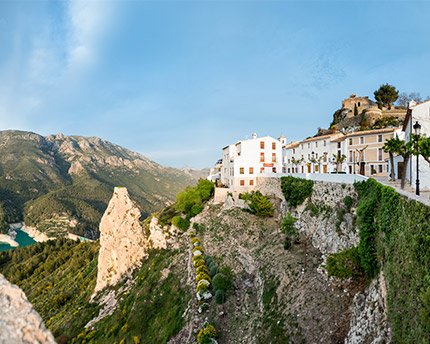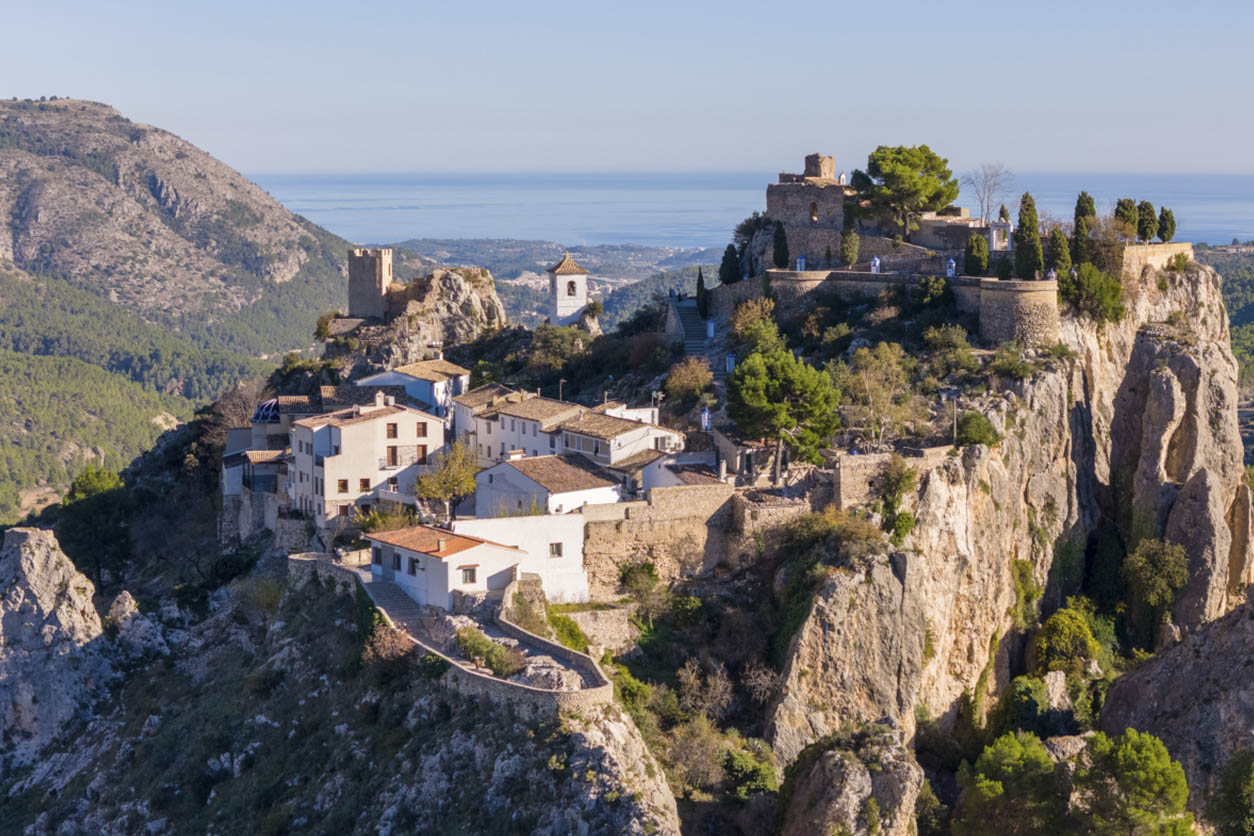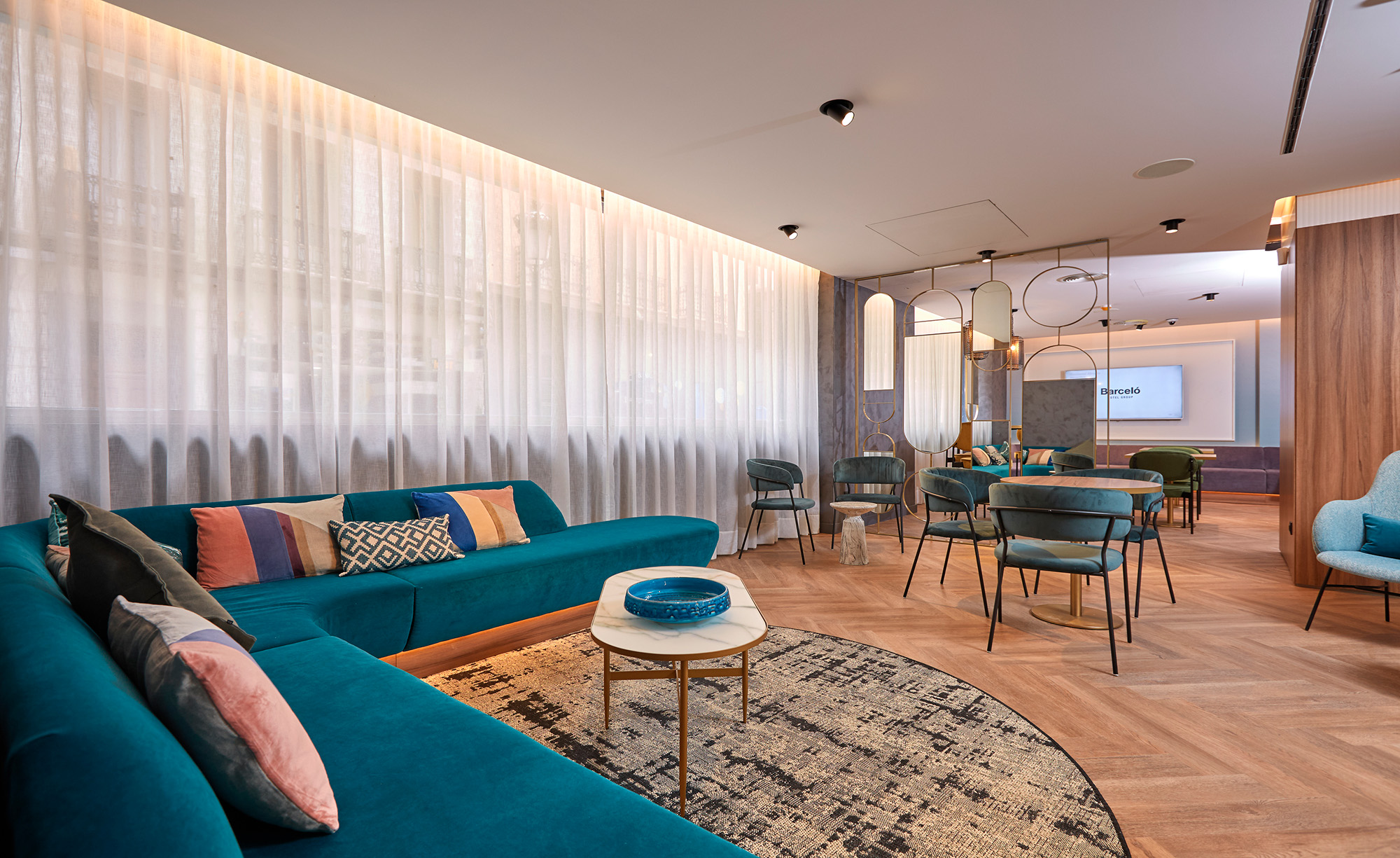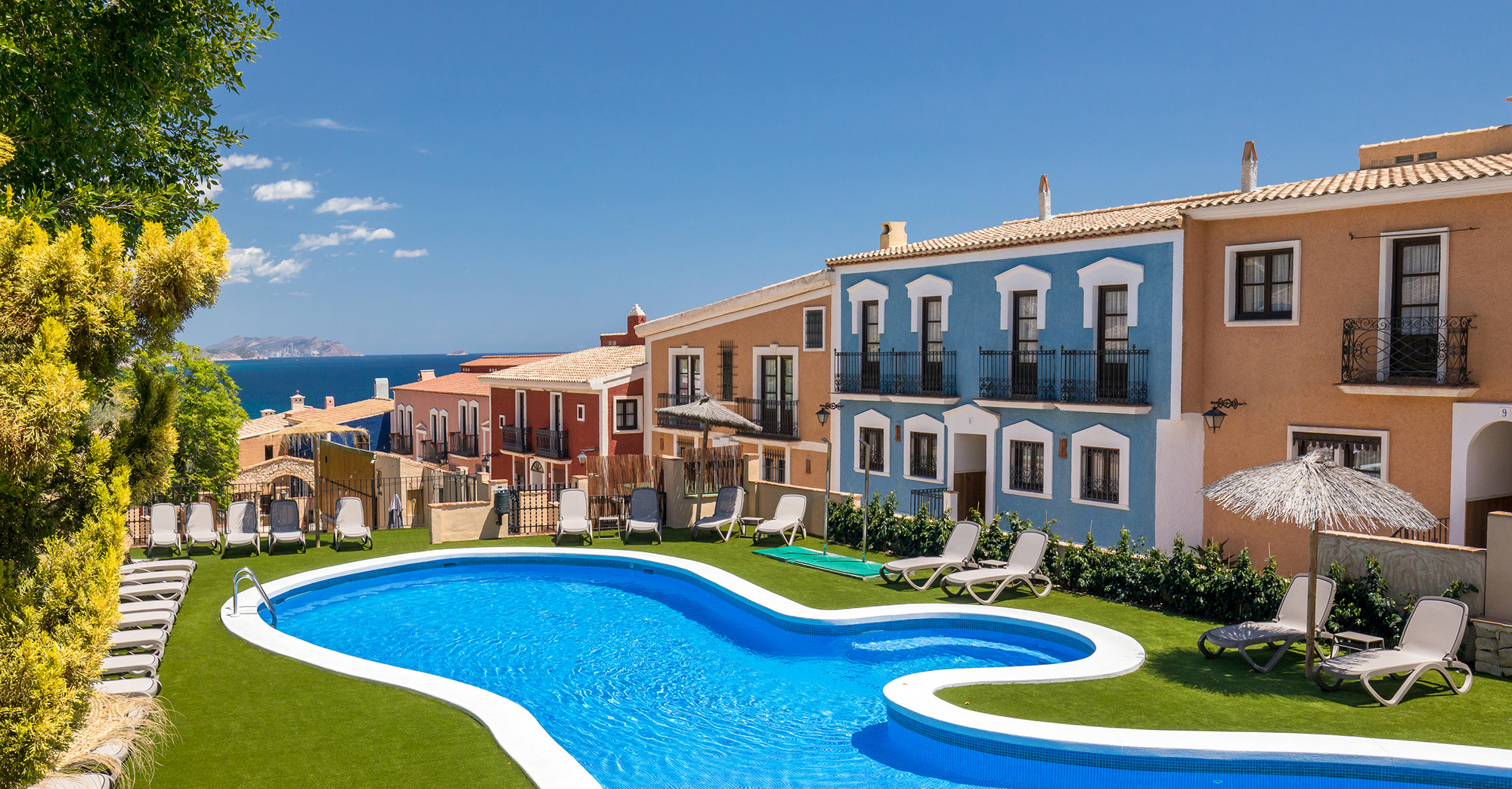The Explanada de España in Alicante, is undoubtedly the most popular pedestrian walkway in the city. It is almost 600 metres long and runs parallel to the port, from Plaza Puerta del Mar to the Parque de Canalejas. With mosaic paving that mimics the waves of the Mediterranean, this promenade is an ideal place to stroll while enjoying the sea views.
What to see along the Explanada de España
For the people of Alicante the Explanada de España is their favorite place for a stroll. More than half a kilometre of pedestrian walkway with its emblematic mosaic paving flanked by four rows of palm trees. At the northern end, the Castle of Santa Barbara, perhaps Alicante’s most well-known postcard, offering the best panoramic views of the city. To the south, the Parque de Canalejas, which serves as an extension to the promenade, and is full of gigantic centuries-old ficus trees that prevent the sun’s rays from filtering through.
On one side, the Mediterranean Sea, with the yachting marina and the commercial port of Alicante. On the other, some of the city’s most emblematic buildings, including most notably the Casa Carbonell, an example of modernist architecture with several domes that stand out against the skyline.
A mosaic of tiles that evokes the Mediterranean
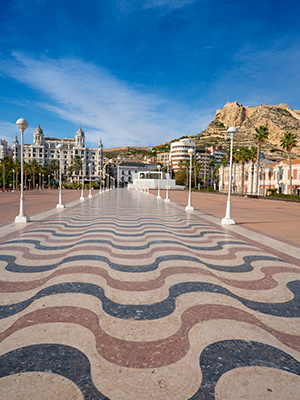
The most striking feature of Alicante’s seafront promenade is undoubtedly its spectacular mosaic paving. Along the half kilometre of this esplanade, there are six and a half million tesserae each measuring about four square centimetres. They combine three colours: Alicante red (a dull white-trimmed maroon), ivory, and marquina black (a bluish black).
The motif of the mosaic takes its inspiration from the sea: the three colours alternate to form a wavy pattern that evokes the waves of the Mediterranean Sea.
Four rows of palm trees
Another of the emblematic features of Alicante’s promenade are the four rows of palm trees that flank it, two on either side. They are such an inseparable part of the promenade for the people of Alicante that the city council has to invest funds in conserving them, which is not easy compared to other species.
Their roots present a real problem, since as they grow they distort the paving and end up breaking the tiles. At one time the possibility of replacing the palms with another type of tree or plant decoration was raised, but it was ruled out due to the intrinsic value of the palm trees. This means that every few years the broken tesserae have to be removed, and the damaged areas have to be trimmed and re-paved.
The Casa Carbonell, the most striking building on the Explanada de España
Along the almost 600 metre length of the Explanada de España, the most impressive building is undoubtedly the Casa Carbonell. This 1920s residential building is the work of the Alicante architect Juan Vidal Ramos and is the greatest example of modernist architecture in the city. Its domes are a very emblematic visual feature of the Alicante skyline.
It was built for the textile entrepreneur Enrique Carbonell, from Alcoy. Carbonell made his fortune during World War I and spent long periods in Alicante, so he decided to build somewhere where he could stay when he was in town. The Casa Carbonell was built on what had been the site of a food market in the nineteenth century.
The year it opened, a light plane from Algiers crashed into one of the building’s balconies, killing its two crew members and causing the partial collapse of one of the domes. Today, the Casa Carbonell houses numerous offices and also some private homes. Next to it on the promenade is the Casa Lamaignere, the facade of which is another jewel of Valencian modernism.
The Concha auditorium: open-air concerts
Another of the landmarks of the Explanada de España is the municipal auditorium of La Concha. It is a regular venue for concerts, of both the Municipal Symphony Band and the marching bands from the province of Alicante. In summer, it also hosts numerous outdoor performances and festivals such as Alacant Rock.
The stage, measuring about 40 square metres, has spectacular acoustics due to its shell-shaped construction. It was renovated in 2015 to repair damage and was given a special coat of paint to combat damp, which is a recurring problem due to its proximity to the sea.
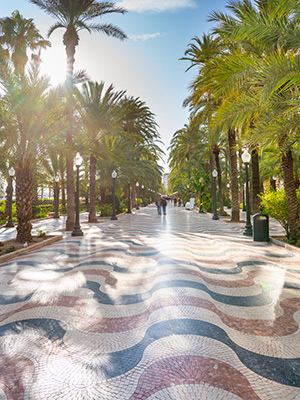
The Explanade and its various names
The Explanada de España runs along what was once the Alicante sea wall. It began to take on its present form in 1830. The then civil governor of the city, Perfecto Manuel de Olalde, took the initiative of clearing the area and building a promenade with gardens. In fact, that was its first name: Paseo de Olalde.
It was not until 1868 that its name was changed. After the revolution of September 1868, known as the “Septembrina”, the Junta de Alicante named the esplanade the “Paseo de los Mártires de la Libertad” (the Promenade of the Martyrs of Freedom) in honour of twenty-four progressive activists who had been shot by firing squad there twenty years earlier. Finally, after the Civil War (1936-1939), the promenade was given its present name of: Explanada de España.
Leisure and shopping along the Explanada de España
Like any other self-respecting pedestrian area, the Explanada de España also has numerous bars and restaurants where you can stop for a drink or a bite to eat. Some suggestions are:
- Horchatería Peret: possibly the most emblematic bar in the area and one of the few that have held out for decades through thick and thin. Half a century serving horchatas at a kiosk that has been handed down from generation to generation.
- La Terraza del Gourmet: a Mediterranean food place that, as the name suggests, has an interesting terrace. It also specialises in breakfasts.
- Unik Asiático: in a street perpendicular to the Explanada de España, this restaurant has a varied buffet of Asian specialties in which each dish ordered is served freshly made.
In addition, along the esplanade you will usually find artists who make a living there: magicians, mimes, musicians, painters… The Explanada de España is also a great place to stop and shop. Since 1979 it has been the site for numerous craft and souvenir stalls selling accessories, jewellery and leather goods, as well as furs and textiles.




































































